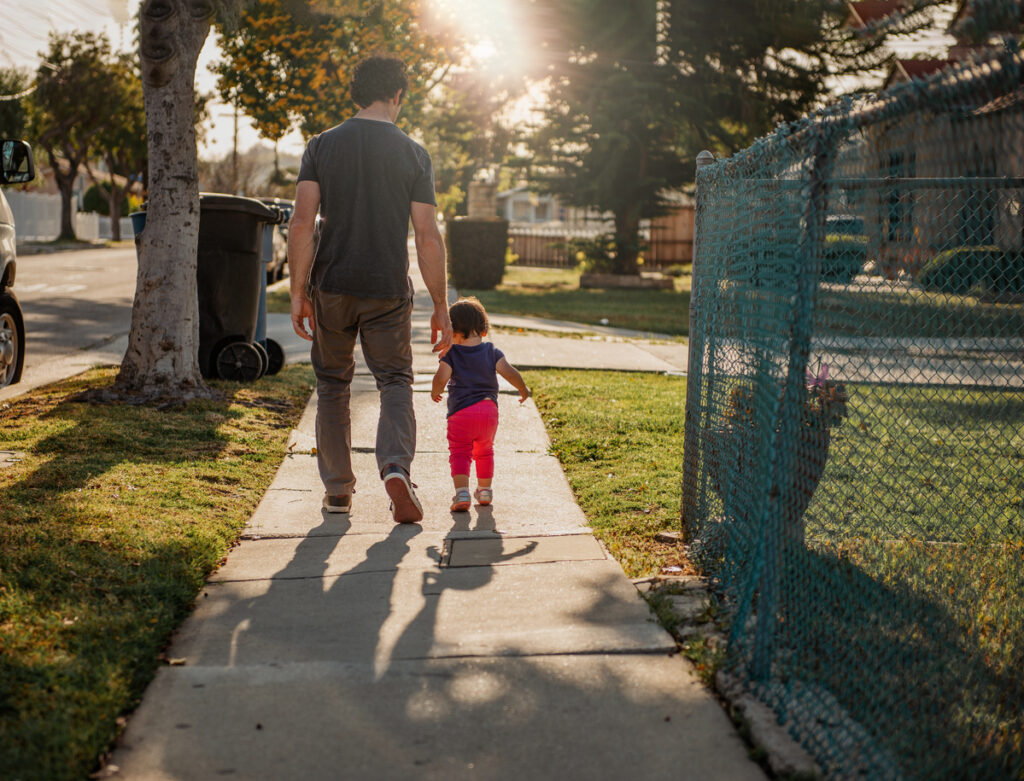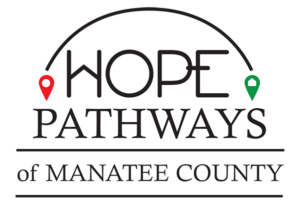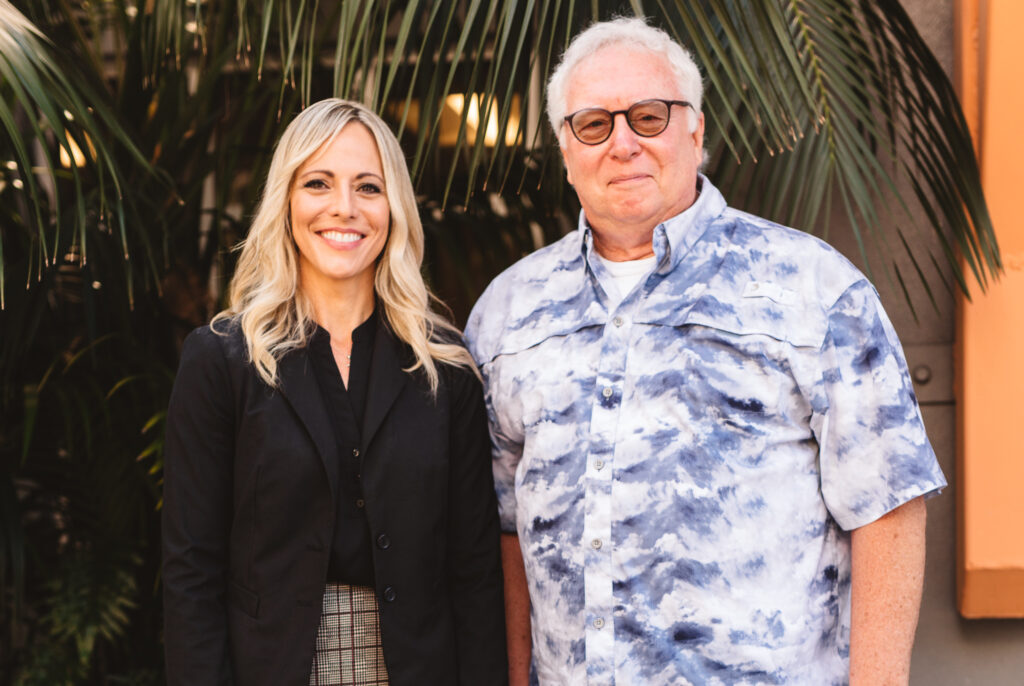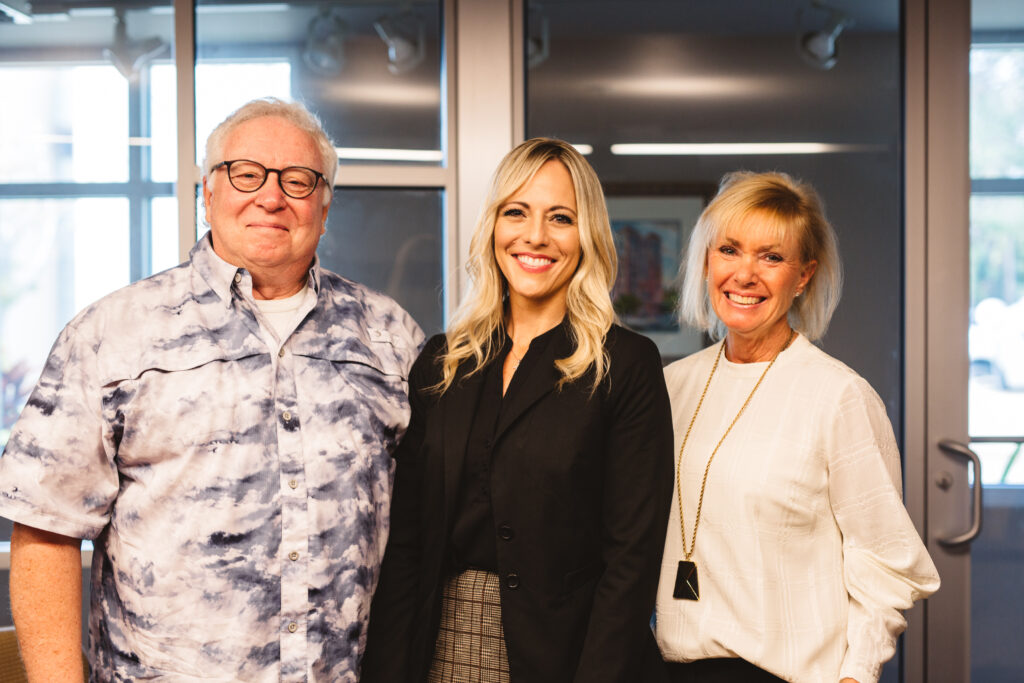
No Place Like Home: Addressing Family Homelessness Through Community Collaboration
Family homelessness is a growing issue affecting countless communities across the U.S. With the increasing cost of housing, economic instability, and limited job opportunities, many families are finding themselves struggling to make ends meet and ultimately facing the prospect of losing their homes. When families experience homelessness, they face a multitude of challenges that can undermine their well-being and their ability to thrive. Despite the widespread prevalence of this issue, family homelessness remains largely invisible, and many families struggle to access the support they need when they need it most. For this reason and more, it’s critical to raise awareness of family homelessness and to support families experiencing homelessness and prevent further displacement.
Because the COVID-19 pandemic disrupted the collection of data, 2020 is the most recent year with accurate statistics on the extent of homelessness in America and its impact on specific populations. According to the National Alliance to End Homelessness, 580,466 people in America experienced homelessness that year, with families with children accounting for 30% of that total. According to the National Center on Family Homelessness, 2.5 million children now experience homelessness each year in America—a historic high. Homelessness affects one out of every 30 children in the country.
How can we help families find secure and stable housing? To start, meaningful solutions must consider the many causes of homelessness in America, and the wide range of effects it has on families and children.

The Causes of Family Homelessness
No doubt, every story of homelessness is complex and multi-faceted, involving a mixture of personal, societal, and economic factors. Addressing root causes is no simple matter.
Substance abuse, mental health challenges, and domestic violence are frequently cited as contributing causes to homelessness. Still, the primary factor underlying family homelessness and housing insecurity is the availability of affordable housing. Since the mid-1980s, the supply of low-cost housing in the U.S. has dramatically fallen—even as rent has risen while relative wages have remained largely stagnant. Today, America faces a severe crisis in affordable housing.
In the U.S., there’s a shortage of 7.3 million available rental homes that people with incomes at or below the federal poverty level can afford. Eight million households are at high risk of housing instability or homelessness because they already devote at least half of their income toward housing costs. Another 3.7 million people are at risk of housing instability because they’re sharing their housing with other people, which can also have negative repercussions.
During the pandemic, millions of people lost their jobs and were put at severe risk of housing insecurity. Emergency rental assistance and a suspension on evictions helped alleviate that problem. However, 20% of renters with children were still not caught up with rent by October 2021, and rental assistance programs have or will soon expire in many states. As housing prices and rental costs continue to soar, inflation is now making it even harder to make rent. Many families also encounter discrimination and unfair treatment in the housing market, further limiting their access to safe, affordable, and reliable housing.
The Impact of Homelessness on Families
While any person or group can experience homelessness, the immediate and long-term impact can be particularly challenging for families and children. Housing insecurity has significant, adverse effects on physical, mental, and social health, especially on families and children.
Children experiencing housing insecurity are more likely to have emotional and behavioral challenges, as well as health-related problems. Young children, who would normally be at home for large portions of each day, are particularly susceptible. They suffer socially and academically from the dislocation, upheaval, and social stigma of homelessness, and their circumstances increase their likelihood of interaction with the criminal justice system and child welfare services.
Nevertheless, there is hope. Research indicates that the impact on children who experience homelessness fades over time, especially with an increase in proper support, stability, and healthy development.
The Power of Community Collaboration
At the community level, collaboration between social services organizations and government agencies plays an important role in helping homeless families regain housing security, economic stability, and independence. Programs and initiatives that prevent evictions, make housing more affordable, and rapidly rehouse people in need make a scalable difference for those who are homeless or are struggling to find secure housing. We can further amplify and facilitate collaboration like this today through powerful and secure technology platforms, with the collective goal of addressing family homelessness by helping families recover and thrive.
The recent success in reducing homelessness among veterans—who are 50% more likely to be homeless than other adults—is an inspiring example. Between 2020 and 2022, the U.S. Department of Housing and Urban Development (HUD), the U.S. Department of Veterans Affairs (VA), and the U.S. Interagency Council on Homelessness (USICH) reduced veteran homelessness by 11%. Its success was driven by a Housing First approach, which focused on housing veterans at the outset, and then providing them with wrap-around support such as healthcare, job training, education, and more. More than 30,000 homeless veterans were placed into permanent housing.
Initiatives like these make a strong case for working across sectors to better serve those in need. Community organizations help homeless families regain stability and independence by collaborating with one another to connect people to resources, services, and support. Together, we can work to end family homelessness and ensure all families have access to safe, affordable, and stable housing.
To do this, solutions should:
- Provide relief, temporary shelter, and assistance. During the pandemic, rent relief and eviction assistance were crucial interventions that reduced homelessness. When homelessness is unavoidable, emergency shelters and interim housing can provide temporary refuge. Rapid re-housing has also helped families get back into stable housing sooner.
- Support with income, employment, and education. Programs and services that supplement income, support employment, and provide education can help promote housing stability in a way that’s both sustainable and intentional. Going one step further and addressing needs around food insecurity, child care, transportation, utility payments, and healthcare reduces the likelihood of repeating the cycle of homelessness. Programs like Temporary Assistance for Needy Families (TANF), Supplemental Nutrition Assistance Program (SNAP), and Women, Infants, and Children (WIC) are crucial for individuals and families experiencing homelessness.
- Collaborate around a coordinated approach. Effective coordination between community organizations and service providers aligns efforts that limit homelessness, match families to resources and services, and reduce recurrences. Adopting this coordinated approach allows communities to identify gaps, set goals, and establish timelines—all the while assessing resources to quickly identify people experiencing a housing crisis and connect them to care.
- Facilitate communication and secure information sharing. Effective use of technology helps communities better understand the issue, identify the root causes of homelessness, and develop effective solutions. Communicating and securely sharing information in accordance with an individual’s consent across a single platform allows local organizations to better allocate resources and coordinate quick responses to the families they serve.

Technology That Works Together
Investing in the community, providing longer-term housing, and connecting those struggling with homelessness to wrap-around support takes significant collaboration. While housing services can be a complicated landscape, Unite Us streamlines the referral process and connects community-based organizations to coordinated referral systems that already exist, like Continuums of Care (CoCs).
Using the Unite Us Platform, organizations can follow each client’s journey from start to finish and ensure families get connected to other social supports designed to strengthen and improve their lives. Unite Us’ national network across 44 states includes thousands of organizations and programs that offer support to homeless families and individuals—with a wide range of services including child care, employment assistance, early childhood services, income support, and more.
Organizations already leveraging Homeless Management Information Systems (HMIS), which are local information systems that comply with HUD’s data collection, management, and reporting standards, require technology solutions that streamline collaboration and easily integrate into their daily operations.
Unite Us has partnered with several CoCs across the country. Using Unite Us with HMIS allows organizations to:
- Send secure, real-time referrals and track client outcomes.
- Identify eligibility gaps that affect community members.
- Proactively address a range of client needs beyond housing.
- Increase organizational efficiency and strengthen your impact.
“It would be impossible to have the connections to as many organizations and services as Unite Us can link us up with. It goes back to the time consumption. Even if my ‘network’ was as large as the Unite Us database of organizations, I would not have enough time in the week to reach out to them for the number of families in need that we serve. With Unite Us, the referral is sent from organization to organization seamlessly. It has been very efficient for myself and the families we serve.”
– Jason Chaplin, Housing Stability Advocate at St. Paul’s Center
Interview Spotlight: Hope Pathways of Manatee County
 We recently had the opportunity to interview our partner Hope Pathways of Manatee County (HPMC) about their experience working with Unite Us to connect the dots in their community.
We recently had the opportunity to interview our partner Hope Pathways of Manatee County (HPMC) about their experience working with Unite Us to connect the dots in their community.
Created to end homelessness in Manatee County, Florida by building partnerships between nonprofits, HPMC hopes to uplift those impacted by homelessness in an interconnected, systemic, compassionate fashion. This work starts with filling the gaps by creating processes that help move individuals who are experiencing homelessness into emergency shelters, supportive services, and ultimately into affordable housing.
“A lot of organizations are realizing they need to unify and collaborate, but they’re struggling with how. With the HPMC Model, we focus on giving a hand up—not just a handout. It is about calculated compassion and Unite Us provides a tool for that process.” – Christina Gerken, Align Consulting
Part of Unite Florida, a coordinated care network of health and social services providers, HPMC utilizes the Unite Us Platform, a collaboration software that allows all of the initiative partners to easily connect, securely share information, and ultimately better serve those in need.
“Our Align Round Table needed a coordination system to help implement the HPMC Model. Unite Us is that needed tool for this working model. It offers the connection to keep the accountability going, so you never lose track of people and you never give them that horrible feeling that nobody cares.” – Dr. Eric Palmu
Read more from the dynamic conversation with Christina Gerken from Align Consulting; Dr. Eric Palmu, an Advisory Board Member for HPMC; and Stephanie Harris, Unite Us Senior Community Engagement Manager in Florida below.

Q: Tell us about your organization, Hope Pathways of Manatee County.
Christina: A lot of organizations are realizing they need to unify and collaborate, but they’re struggling with how. With key leaders in the community of Manatee County, the Hope Pathways Initiative was designed, created, and implemented through an Align Round Table. This is a model where organizations step in and are part of it. HPMC is not a new nonprofit. It’s a coalition, a coordinated effort. HPMC is not duplicating services or telling an organization what they can or can’t do because they’re already doing excellent work. Organizations, entities, healthcare, and law enforcement connect so that clients in need of services can go from beginning to end in a more streamlined process. In addition, with the HPMC Model, we focus on giving a hand up—not just a handout. It is about calculated compassion, and Unite Us provides a tool for that process.
Q: What are some common misconceptions about family homelessness and the impact it has on the community?
Christina: To combat the stigma of homelessness, it’s important to educate the community that an estimated 70% of homeless people want help, but there is no clear pathway for them. We want to teach the community how to effectively help those who want to come out of the poverty cycle and about where their existing tax dollars are going. For example, in the Manatee County Sheriff’s Office, their jail spends between $7M and $8M per year housing homeless individuals and dealing with them for small infractions. Then there’s the child welfare system and the court system: Thousands of additional dollars are spent per child due to the lack of housing options. When communities provide monetary support for organizations helping those individuals in need, they help those organizations continue meeting the needs of those they serve and expanding their programs and services for individuals who need help.
With the Unite Us Platform and the Hope Pathways Model in Manatee County, we gather analytical data to better quantify the needs of the community in all areas of social services. Unite Us helps us understand what the strengths of the community are and where the current gaps in services are. This helps local, city, and state entities know where funding should be distributed.
Stephanie: Homelessness is humiliating for someone in crisis, especially if it is their first time being homeless. There’s a lot of wounded pride. At one point when I was a housing director, I had 16 people in my men and women’s home, and more than half of them had a college degree. Two of them had doctorates. Homeless people are not necessarily uneducated. These are individuals whose lives spiraled out of control. They needed compassion to get them connected to services. I wish we’d had Unite Us at the time. That’s why it made it so easy for me to make this career jump—because I get it. I’ve seen it.
Q: How does collaborating with other organizations play a role in your work?
Dr. Palmu: Two words that are always so important are collaboration and transition. All the organizations are already out there, and our hope is to draw them together around one individual. We’re never letting people stay where they are until they are out of poverty. We keep encouraging and keep supporting them, but at some point, people are going to have to move on to the next level. Those are the two words that I’m always stuck on: collaboration and transition.
Q: Are there any unique partnerships that you’d like to highlight?
Christina: Nick Manassa Ministries is an HPMC member that works toward providing additional emergency shelters, transitional housing, and it partners with law enforcement. When there’s an individual or family in need, Nick Manassa Ministries enters them into Unite Us. Captain Rick recently said that within five minutes, there was a response. That’s what all of our partner organizations have seen in the last year. Instead of taking sometimes three to five days before connecting with an organization, it’s been one day or less. The organizations are blown away by that because ultimately, it’s eliminating some of the trauma for the client, who is already in crisis, and providing much-needed services so much faster.





